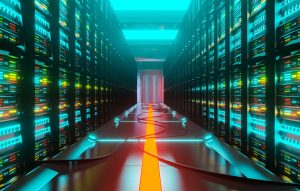For many enterprises, the backbone of their operations lies in legacy applications that have served them faithfully over the years. However, as technology advances at an extraordinary pace, maintaining these legacy systems becomes a strategic hurdle rather than an asset.
According to an Alteryx-commissioned IDC survey, nearly 90% of businesses are hindered by their legacy technologies.
Legacy application modernization emerges as a critical imperative for organizations seeking to explore new levels of efficiency, agility, and competitiveness. This comprehensive guide aims to explain the complex path to modernizing your business by navigating the complexities of legacy systems and embracing modern technologies.
Legacy application modernization: Elevating businesses to new heights
Legacy application modernization refers to the process of upgrading and revitalizing outdated software applications that have served as the backbone of an organization for an extended period of time.
It involves migrating from older, often obsolete, technology architectures to contemporary, scalable, and efficient solutions. This overhaul is not merely a technical facelift, but a holistic approach aimed at aligning technology with current business needs, ensuring agility, security, and enhanced functionality.
Legacy applications, while reliable in their time, often pose challenges such as limited scalability, security vulnerabilities, and compatibility issues with modern technologies. By undertaking the modernization journey, organizations can unlock a spectrum of benefits, ranging from improved operational efficiency and reduced maintenance costs to heightened agility and innovation capabilities.
Legacy application modernization is not a one-size-fits-all process. It encompasses a variety of strategies, including re-platforming, re-hosting, re-architecting, or even re-engineering applications. The choice of approach depends on the unique requirements, objectives, and constraints of each business.
Strategies for legacy application modernization
Comprehensive assessment and planning
Prior to initiating any modernization effort, a thorough assessment of existing legacy systems is important. Understand the strengths, weaknesses, and dependencies of the current applications. This analysis serves as the foundation for a comprehensive modernization plan, outlining goals, timelines, and resource requirements.
Choose the right modernization approach
The modernization path is not same for every organization. Depending on the business context, choose the most suitable approach—whether it’s re-platforming, re-hosting, re-architecting, or a combination thereof. Each strategy comes with its own set of benefits and considerations, and selecting the right one is instrumental in achieving the desired outcomes.
Prioritize user experience and stakeholder involvement
Engage with end-users and stakeholders throughout the process to understand their needs and expectations. By involving stakeholders, businesses can garner support, mitigate resistance, and ensure that the modernized applications meet the practical requirements of those who rely on them.
Data migration and integration
Ensure that data from legacy systems is transferred securely to the new environment without compromising integrity. Integration with other systems, both existing and new, is crucial for maintaining business continuity and maximizing the value of modernized applications.
Continuous testing and quality assurance
Implement comprehensive testing protocols to identify and rectify potential issues at every stage. Continuous quality assurance ensures that the modernized applications meet performance standards, security benchmarks, and user expectations.
Security and compliance considerations
Modernized applications must adhere to the highest security standards and industry regulations. Incorporate robust security measures into the modernization plan to safeguard sensitive data and protect against potential cyber threats. Compliance with regulatory requirements is non-negotiable, and businesses should factor this into their modernization strategy.
Training and change management
Equip your workforce with the necessary skills to adapt to modernized applications. Comprehensive training programs and change management initiatives help employees navigate the transition smoothly. A well-prepared workforce minimizes disruptions and accelerates the realization of benefits from modernized systems.
Navigating the challenges of legacy application modernization
Legacy system complexity
Legacy systems are often intricate, with complex architectures that have evolved over the years. Untangling this web of dependencies can be challenging. It is essential to leverage cutting-edge technologies like microservices architecture, API integration, and cloud migration to deftly unravel legacy system complexities. Employing Docker ensures seamless application deployment, while DevOps practices enhance collaboration.
Budgetary constraints
Modernization initiatives require substantial financial investments. Organizations may face budgetary constraints that impact the scale and pace of modernization efforts. To address this challenge, meticulous cost-benefit analyses, phased modernization plans, and exploring cost-effective technologies become essential in optimizing resource allocation.
Data migration risks
Transferring data from legacy systems to modernized environments involves inherent risks. Data integrity, security, and potential disruptions during migration are primary concerns. Robust data migration strategies, thorough testing, and contingency plans are vital to mitigate these risks and ensure a seamless transition.
Resistance to change
Employees accustomed to legacy systems may resist the shift to new technologies. Overcoming resistance requires effective change management strategies, including clear communication, training programs, and fostering a culture that embraces innovation. Involving stakeholders throughout the process can help build buy-in and alleviate apprehensions.
Integration challenges
Integrating modernized applications with existing or new systems can be complex. Ensuring seamless interoperability is essential for maintaining business continuity. Adopting standardized interfaces, APIs, and thorough compatibility testing are instrumental in overcoming integration challenges and ensuring a cohesive IT landscape.
Downtime and disruptions
The transition from legacy to modernized applications may entail downtime, impacting daily operations. Minimizing disruptions requires meticulous planning, phased implementations, and contingency measures to handle unforeseen issues swiftly. Balancing the need for modernization with operational continuity is a delicate yet critical aspect.
Skill gaps and talent shortages
The skill sets required for modern technologies may differ from those needed to maintain legacy systems. Addressing skill gaps through training programs, hiring initiatives, or leveraging external expertise is essential to ensure that the workforce can effectively navigate and leverage the benefits of modernized applications.
The comprehensive benefits of legacy application modernization
Enhanced operational efficiency
Modernized applications streamline workflows, eliminate redundancies, and optimize processes. This results in a significant boost in operational efficiency. This efficiency translates to faster decision-making, improved resource utilization, and ultimately a more agile and responsive organizational structure.
Cost savings and resource optimization
Modernization entails reduced maintenance costs associated with outdated systems. By embracing contemporary technologies, businesses can optimize resource allocation, minimize downtime, and achieve long-term cost savings. This financial efficiency provides the capital necessary for strategic investments and innovation.
Agility and innovation acceleration
Modernized applications empower businesses to adapt swiftly to market changes and technological advancements. This agility fosters a culture of continuous innovation. Moreover, these applications enable organizations to stay ahead of competitors, meet evolving customer expectations, and capitalize on emerging opportunities in the digital landscape.
Scalability for future growth
Modernization ensures that applications are built on scalable architectures capable of accommodating increased workloads and evolving business requirements. This scalability is fundamental for organizations aspiring to achieve and sustain long-term growth.
Improved customer experience
Modernized applications contribute to an elevated customer experience by enabling faster response times, personalized services, and seamless interactions. Enhancing customer satisfaction and loyalty is a direct outcome of the improved functionality and performance delivered by modernized systems.
Security reinforcement
Modernization involves implementing robust security measures, safeguarding sensitive data, and ensuring compliance with industry standards. By fortifying cybersecurity, businesses not only protect themselves from potential threats but also build trust among customers and stakeholders.
Compliance and adherence
Modernized applications are designed to align with the latest regulatory requirements and compliance standards. This adherence not only mitigates legal risks but also enhances the credibility of the organization, instilling confidence in clients, partners, and regulatory bodies.
Extended application lifecycle
Legacy systems face the risk of becoming obsolete, with diminishing vendor support. Modernization extends the application lifecycle, ensuring that organizations can continue to derive value from their investments, while staying current with technological advancements and industry trends.
Use cases of legacy application modernization for enhanced agility and scalability
Financial services: Legacy application modernization at JPMorgan Chase
Challenges:
Legacy constraints impede innovation, scalability, and real-time banking on diverse products.
Solutions:
Cloud migration with microservices and API integration addresses legacy limitations.
Benefits:
Enhanced innovation, scalability, and real-time capabilities; a unified platform for diverse products.
Manufacturing and supply chain: Global semiconductor manufacturer modernization
Challenges:
A global semiconductor manufacturer experienced time-to-market delays from outdated systems.
Solutions:
Implemented a low-code/no-code platform, accelerating development speed by 5x.
Benefits:
Established a CoE for streamlined processes, enabling citizen development and reducing IT dependency.
Healthcare: Legacy system challenges in healthcare organizations
Challenges:
Healthcare organizations with legacy systems struggle with interoperability, data security, and patient care coordination.
Solutions:
Modernizing electronic health record (EHR) systems and healthcare applications improve data accessibility.
Benefits:
Ensures compliance with evolving privacy regulations and facilitates seamless collaboration among healthcare providers.
Retail and e-commerce: Walmart’s e-commerce transformation
Challenges:
Walmart tackled e-commerce competition through a comprehensive digital transformation.
Solutions:
Leveraged technology to optimize the supply chain, expedite home deliveries, and integrated IoT for tailored promotions.
Benefits:
Investments in data lake technology empowered informed business decisions.
Telecommunications: Legacy infrastructure challenges in a telecom company
Challenges:
A telecom company with legacy infrastructure faced issues scaling networks, implementing new services, and adapting to evolving communication technologies.
Solutions:
Modernizing OSS/BSS (Operations Support Systems/Business Support Systems) enables flexible service delivery, quicker time-to-market for new offerings, and improved network management.
Benefits:
Enhanced agility is crucial for telecom success, fostering innovation and rapid adaptation to industry changes.
Energy and utilities: Legacy system challenges in the energy sector
Challenges:
Legacy systems in the energy sector hinder the adoption of smart grid technologies and renewable energy integration.
Solutions:
Modernization enables the implementation of advanced metering systems, predictive maintenance, and grid optimization.
Benefits:
Enhanced operational agility and scalability, support the transition to cleaner and more sustainable energy practices.
Paving the path to future-ready success through legacy application modernization
Legacy application modernization is not just a technological upgrade; it’s a strategic necessity for businesses aspiring to thrive in the dynamic global landscape. Embracing this evolution ensures unparalleled agility, scalability, and a competitive edge. By harnessing streamlined operations, cost efficiencies, enhanced security, and rapid innovation, companies position themselves as industry leaders.
By understanding unique organizational needs, Softweb paves the path to future-ready success through strategic and tailored modernization solutions. The decision to modernize is not merely about staying current; it’s an investment in sustained growth, resilience, and future success. As we stand at the crossroads of technological progress, the imperative is clear: legacy application modernization is the key to unlocking unparalleled opportunities and securing a lasting foothold in the business landscape.









